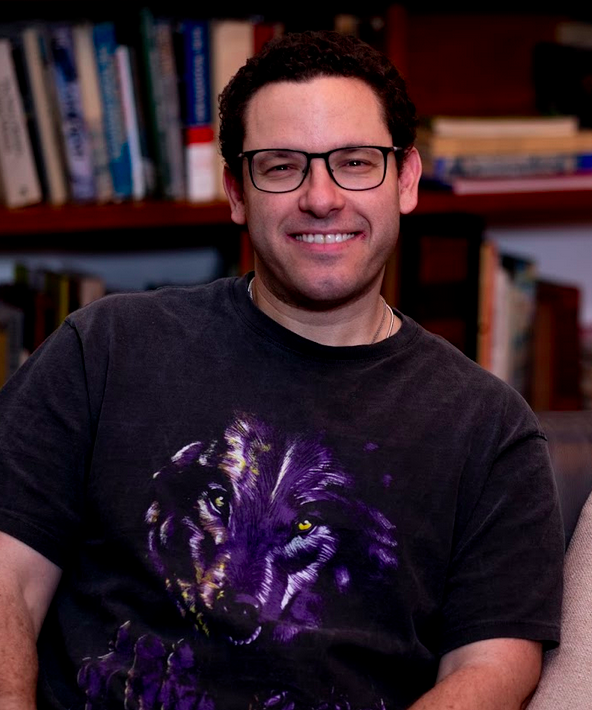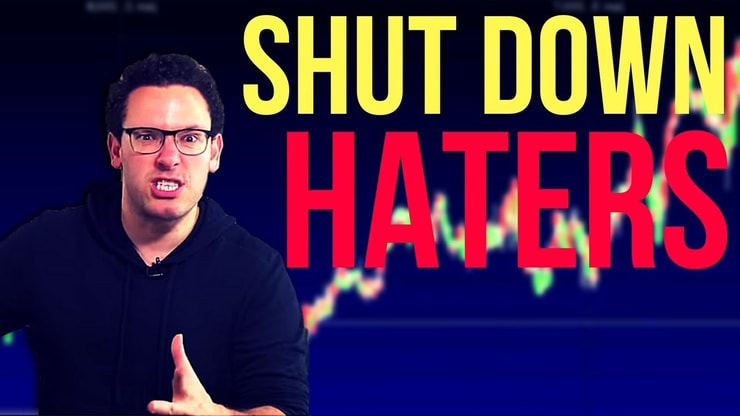So many traders think they’ll make big money fast by trading stocks — but too many fail to consider market tuition.
What’s market tuition? I’ll get to that in a bit … but first, let me be super clear. Trading is far from easy, and no one has a perfect trading record. I share every trade — wins and losses — on Profit.ly.
If you’re new to the markets, the possibilities can seem endless. People post screenshots of huge gains to Twitter and social media — anywhere from $1,000 to $20,000 in a single day.
You look at the charts and tell yourself, “I could’ve have won BIG if I’d traded that…”
That’s the allure of the market. You don’t have to follow rules, right? Just make the right move and you’ll be rich … NOT.
Let me bring you back to reality. The fact that there are no rules means you must create your own. And yeah, there’s a lot of money involved — to both win and lose.
In the market, you don’t trade against other traders, market makers, algorithms, or short-sellers. You are your only opponent.
Your determination, discipline, and patience are the only things that can separate you from the 90% of traders who lose money in the markets.
Table of Contents
Why I Love Penny Stocks
So many people love to rag on penny stocks.
If you trade low-priced stocks, you might get some heat from your friends and family. There’s so much misinformation about low-priced stocks. But nothing in the markets is easy. I won’t try to convince you otherwise. You should heed their warnings and understand that this isn’t an easy game to win.
The risks can be huge if you don’t educate yourself.
Most people know almost nothing about the stock market, let alone how to day trade penny stocks. The average person knows how to buy and hold large-cap stocks or index funds.
That’s fine for some people. But that’s not what I’m about. Those aren’t the kinds of strategies I teach. Before you start, ask yourself…
What Are Your Trading Goals?
If you want to start trading — or even if you’ve already started — you need to figure out what your goals are.
When I trade, my goal is to minimize my risk and take singles. I teach my students to do the same. You can learn the markets while slowly building a small account. But you need to understand the patterns and the process.
Somewhere around 90% of traders lose money in the markets. Most people just don’t take the time to educate themselves on how the market works.
If you don’t want to join the losing 90%, you must learn to think and act differently from the majority. Educate yourself and take the time to learn the markets. But everything comes at a cost…
Why Everyone Pays Market Tuition
What’s market tuition? The money you lose while learning to trade.
Most traders lose money in the beginning. Even those who find success don’t start that way. Some start out lucky only to get knocked back down to reality later. Everyone who stays in the market for more than a few months will pay market tuition.
All your losses, mistakes and failures are just a test to see what you’re made of…so will you stand up & fight or just fold/quit?
— Timothy Sykes (@timothysykes) November 20, 2019
How much will you pay in market tuition? That’s an ongoing cost and determined by you and the market. Only you can limit it.
But it’s not just about how much you pay in market tuition. It’s also learning how to lose and that your losses can make you a smarter, stronger trader. You can even think of market tuition as just another business expense.
You’ll always have losses. You need to have the determination to get back up every time the market smacks you down.
And here’s the thing … You’ll never completely know the markets. They change and evolve. What works now may not work in a few years. That’s why you have to be a self-sufficient, adaptable trader. So don’t think your education is ever over. It’s something you work on as long as you trade.
Keep Your Costs Down
There are ways you can limit your market tuition costs. But you have to stay disciplined and focused. Trade only the best setups and always cut losses quickly.
When you’re learning the markets, start with a small account and trade small. Many of my students lose half their accounts when they start. It doesn’t matter if they start with a $2,000 or $20,000 account. So even if you can afford a $50,000 account, don’t risk that much in the beginning.
For most people, losing $1,000 sucks but probably won’t mean bankruptcy. The losses should hurt enough that you learn from them, but not so much that you can’t pay your bills. Never risk more than you can afford to lose.
You can also limit your tuition with patience. Wait for the best setups. Build solid watchlists and trading plans. And make sure you follow your plans — use limit orders in the beginning if it helps you.
As a rule of thumb, never risk more than 1% of your account. When you’re consistently profitable and know to cut losses quickly, you can consider bigger trades. You can track every single trade from the beginning with Profit.ly.
More Breaking News
- American Airlines: Navigating Stormy Skies
- MicroAlgo’s Surprising Stock Surge: What’s Behind It?
- Portage Biotech’s New Breakthrough: Time to Buy?
Case Study: Tim Grittani
My student Tim Grittani** might just be the most successful penny stock trader ever. But Tim didn’t start off with $1 million in profits in his first year…
Tim started with a $1,500 account and lost more than half of it. He scrounged up more cash and got back at it. He studied nonstop for nine months before he became consistent. And even then it took time to build his account.
He started off losing half his account and took almost a year to become profitable. Bottom line: It takes time and you need to be prepared to start off with losses.
You also have to be realistic in terms of how much time you can put in. A full-time job, college, or your family can mean the process might be longer than nine months for you. And you may lose more than Tim did in his first year.
But make the choice before you start: will you give up when things get hard or push through?
[**Note that these results aren’t typical. This student put in the time and dedication and has exceptional skills and knowledge. Most traders lose money. Always remember trading is risky … never risk more than you can afford.]
Your Life, Your Trades, Your Choice
Trading is a marathon, not a sprint. My rules and methods can provide a foundation for you to learn how to consistently trade.
But not at first. First, you need the determination to study hard and stick to it. You have to sacrifice your time to learn. Remember to think big picture. What are you doing now to set yourself up down the road?
You gotta decide how you want to spend your life. Do you want to work for someone else until you retire? Or do you want something more? There’s no right answer. You have to know what’s right for you and your lifestyle.
And you gotta work so hard for it. Only those with grit and determination will make it though. The market weeds out the weak, the lazy, the gamblers, and the undisciplined.
Learn from those who have gone before you. Spend the time and energy to develop a plan.
Patience Is a Virtue

2025 Millionaire Media, LLCYou need patience in the markets. Patience to learn and to wait for the best setups for your trading style.
My Trader Checklist can help you determine what’s a solid setup. While you wait, you might be tempted to take a second-class setup. Don’t do it.
Let’s say you get bored and take a lousy setup. While you wait for it to play out, the perfect setup comes along. But you’re stuck and there’s nothing you can do. Maybe you don’t have enough cash to take the trade or you’re out of day trades because of the Pattern Day Trader (PDT) rule.
That’s an opportunity cost. Your impatience and poor decisions cost you the ability to take a trade that fits your trading plan to a T…
It’s OK. It happens to all of us. Learn from your mistakes as you go. And don’t let it happen again.
Why the PDT Is a Good Rule
A lot of newbies gripe about the PDT restriction. Personally, I think it’s a good rule.
It forces new traders to be very selective and take only the best setups. It means that with each trade, you’re risking more than just your trading capital … You’re also risking your ability to take the next trade.
Stay patient and wait for the best setups. You don’t need to trade every day.
For the past three years, I’ve started out with a small $12,000 account. I do this so I have to earn my way out of the PDT restriction. I also do it to show my students that it’s possible to grow a small account.
Good Trading Is Boring
A lot of people love action, they love being in the trade and the adrenaline rush. I don’t teach that kind of trading. I teach boring trading.
I’ve seen plenty of gunslingers come and go. They start with me for a time, learn a few basics only to get bored later on.
These traders take the little knowledge they gain and go wild in the markets. They trade big positions. They don’t follow any rules … and some do OK for a while. But it never lasts long…
Some of these traders contact me after they blow up their accounts. They tell me the reason they lost it all was because they didn’t follow my rules. But the real reason is that they had the wrong mindset.
They went in without a plan and a gambler’s mindset. Save that for a casino and do this instead…
Focus on the Right Mindset
Check out this tweet I shared recently:
“Nobody ever wrote down a plan to be broke, fat, lazy, or stupid. Those things are what happen when you don’t have a plan.” – Larry Winget
— Timothy Sykes (@timothysykes) November 20, 2019
If you want to trade long term, start with a plan.
If your goal is to make as much money as possible as fast as possible, you need smarter goals.
But if your goal is to spend more time with your family, travel, or give more to charity, you might stand a chance. Trading has allowed me the opportunity to do all these things.
I could stay in New York, strapped to a desk and trade nonstop. I could probably be a billionaire if I chose that route. But that’s not what I want out of life.
So write down your goals. Be detailed and create a path to achieve them. And don’t be afraid to be a boring trader to get there.
The Advantages of Losing Small
If you don’t take small losses, they can snowball into big ones.
You’ll never eliminate losses altogether. But you can hone your process to limit them. One trade will never make you rich, but one trade can bankrupt you.
Determination, Discipline, and Patience
Trading is dangerous — especially if you don’t know what you’re doing. Penny stocks can make huge moves very quickly.
Take time to educate yourself in the markets before taking a single trade. Find a process and stick to it. Don’t trade random setups. Instead, stick to one or two specific setups.
Keep your losses small while you hone your system. You will lose and that’s OK. Anytime your trade goes against you, get out as soon as possible. Don’t let a small misstep blow up your entire trading account.
If you can follow these simple boring rules, you might overcome the obstacles that force most new traders out of the market. Determination, discipline, and patience separate the winners from the losers.
I challenged myself to create more world-class traders. Do you have what it takes to make in the market? Apply for my Trading Challenge now.
What do you think of this post? Share your thoughts in the comments below!






Leave a reply